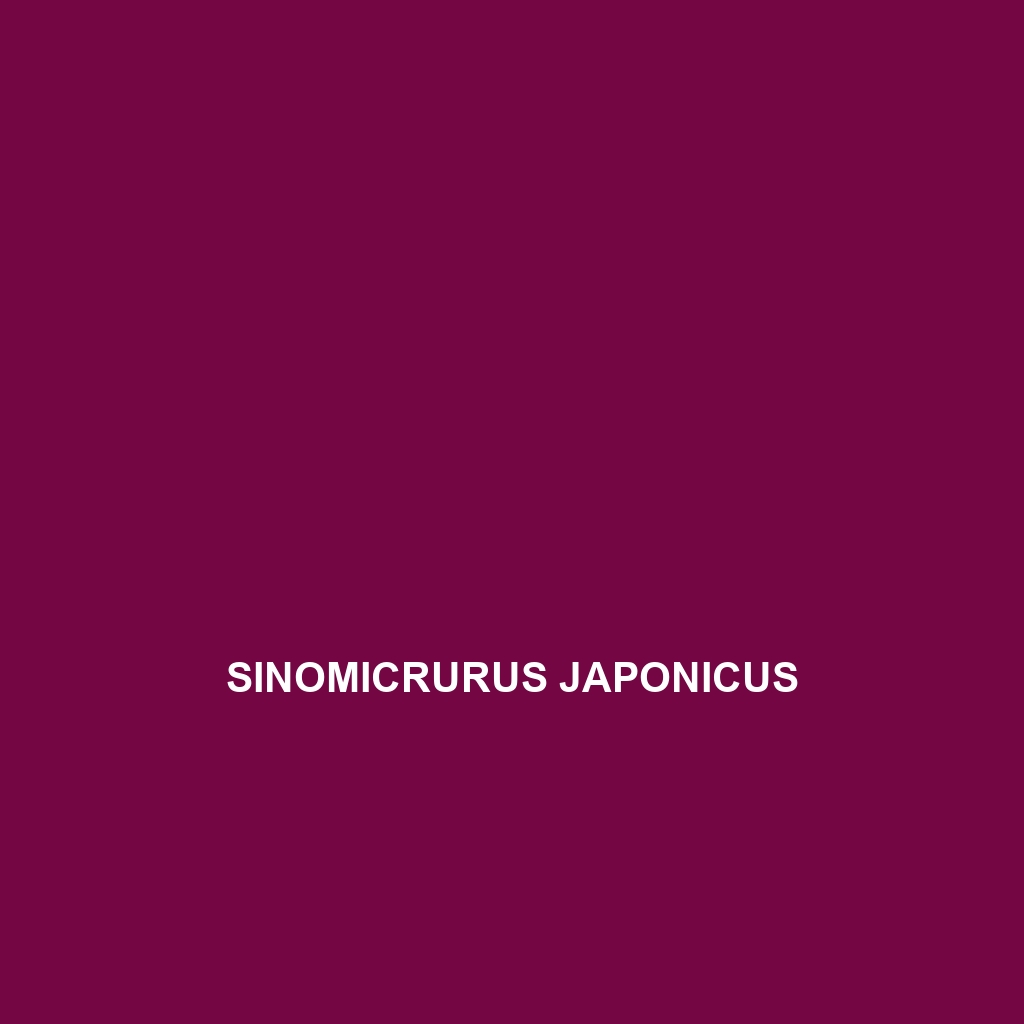Common Name
Sinomicrurus japonicus
Scientific Name
Sinomicrurus japonicus
Habitat
Sinomicrurus japonicus, commonly known as the Japanese Coral Snake, is primarily found in the temperate forests and coastal areas of East Asia, with its range predominantly extending across Japan, Korea, and parts of China. This species favors habitats that offer a combination of dense foliage and moist environments, including the understories of temperate rainforests and savannas. The climate in these regions is characterized by seasonal temperature variations and high humidity, creating an ideal setting for the survival and reproduction of this particular snake species. These snakes often inhabit areas with ample leaf litter which provides both camouflage and a hunting ground for their prey.
Physical Characteristics
Sinomicrurus japonicus exhibits distinctive physical characteristics that set it apart from other snakes. Typically, this snake ranges from 60 to 100 centimeters in length. It has a slender body, adorned with a striking pattern of bright colors. The dorsal side is usually a vivid red or orange, interspersed with black bands that provide effective camouflage amongst the fallen leaves and busy undergrowth. One of its most notable features is its smooth, shiny scales that reflect light beautifully. The triangular head of Sinomicrurus japonicus is often slightly wider than its neck, which helps in identifying this species from non-venomous snakes in the region. Its eyes are small and round, further adding to its unique appearance.
Behavior
The behavior of Sinomicrurus japonicus is marked by both nocturnal tendencies and solitary habits. Primarily active during the night, this species hunts and socializes under the cover of darkness, which aids in avoiding predators while increasing the success rate of hunting. Mating rituals occur during the warmer months, with males often engaging in combat displays to win over females. Their behavior also includes a defensive posture of coiling and flattening their bodies when threatened. Despite being venomous, they prefer to flee rather than confront potential threats, displaying remarkable agility as they navigate through dense vegetation.
Diet
Sinomicrurus japonicus is classified as a carnivore, primarily feeding on small reptiles, amphibians, and occasionally small mammals. Its diet mainly consists of lizards and frogs, which it subdues using its potent venom. This snake is known for its ambush hunting technique, relying on stealth to approach prey before striking quickly. The diet is crucial for maintaining its energy levels, especially during mating seasons when activity increases. The availability of food in their habitat influences their local population dynamics and health.
Reproduction
The reproductive cycle of Sinomicrurus japonicus is synchronized with seasonal changes, typically occurring in spring. Mating can last from a few hours to several days, with females laying eggs in early summer. The clutch size generally ranges from 5 to 15 eggs, depending on the female’s size and health. The incubation period for the eggs is usually around 60 days. Once hatched, the young snakes emerge fully formed and capable of independence, possessing an innate ability to hunt from a very young age. This reproductive strategy ensures that the species continues to thrive in various ecological conditions.
Conservation Status
According to the IUCN Red List, Sinomicrurus japonicus is currently classified as ‘Least Concern,’ although it faces various threats such as habitat loss due to deforestation and urban development. Despite its stable population in some regions, local threats can negatively impact its survival, emphasizing the need for continued monitoring and conservation efforts. Protecting natural habitats and ensuring that ecosystems remain intact are essential for the sustainability of this species. Conservation initiatives aimed at habitat restoration are crucial if future populations are to remain stable.
Interesting Facts
One fascinating aspect of Sinomicrurus japonicus is its notable mimicry of the highly venomous species, which helps deter potential predators. Despite its own venomous nature, this snake is rarely aggressive towards humans; it is more often sighted fleeing from disturbances. Additionally, this species has a unique defense mechanism that includes releasing a foul-smelling secretion from its cloaca when threatened, which acts as a deterrent against predators. These adaptations contribute to its resilience in diverse habitats.
Role in Ecosystem
Sinomicrurus japonicus plays a critical role in its ecosystem as both a predator and prey. As a predator, it helps control the population of its prey species, such as lizards and amphibians, thus maintaining ecological balance. Additionally, given its position in the food web, it serves as a food source for larger predators, including birds of prey and larger snakes. Moreover, by influencing the populations of its prey, it helps promote biodiversity within its habitat, demonstrating its importance as a keystone species in its ecosystem.
